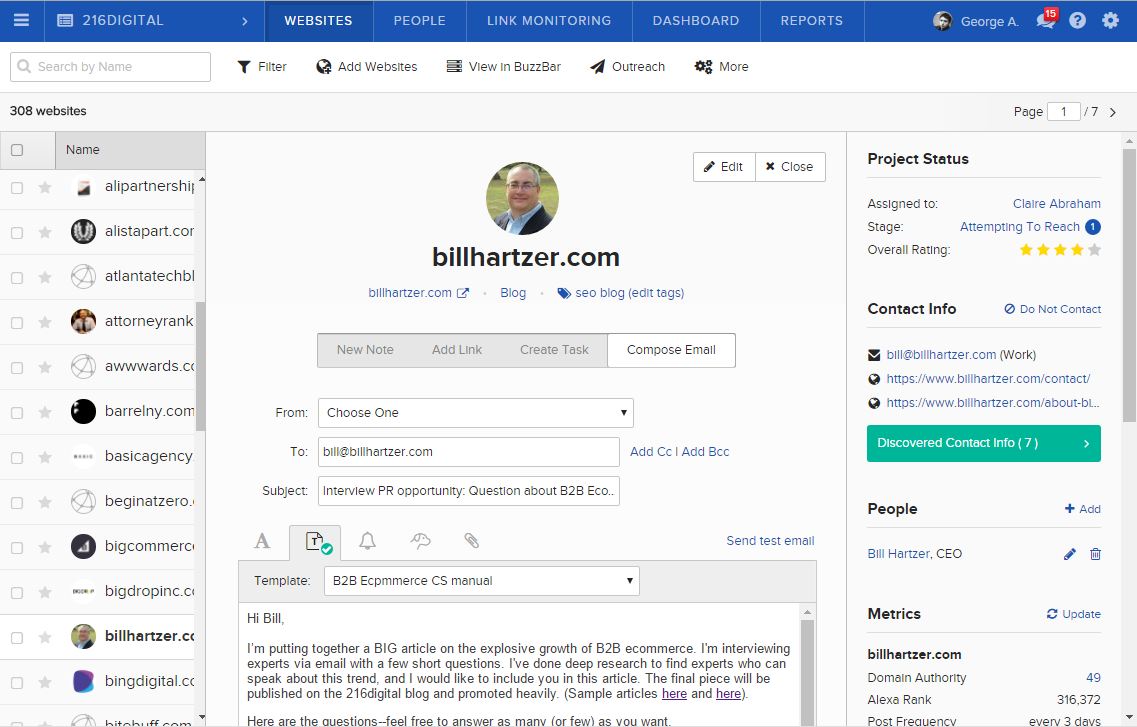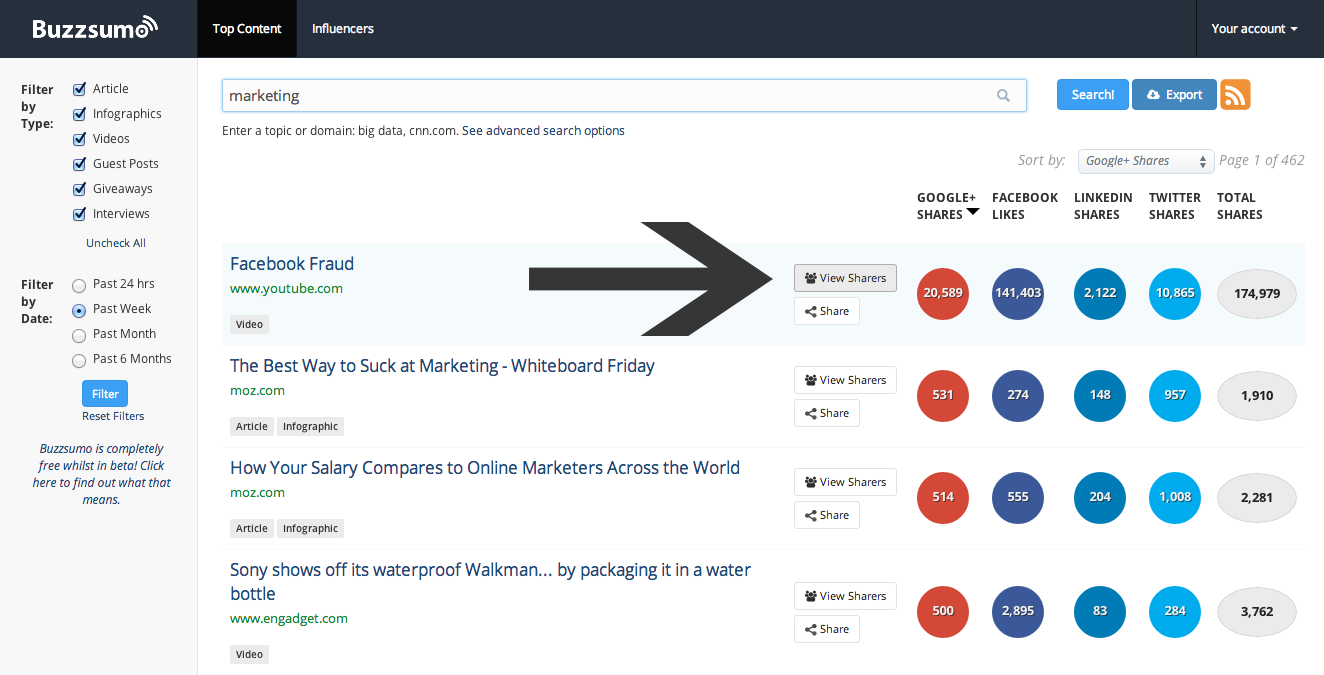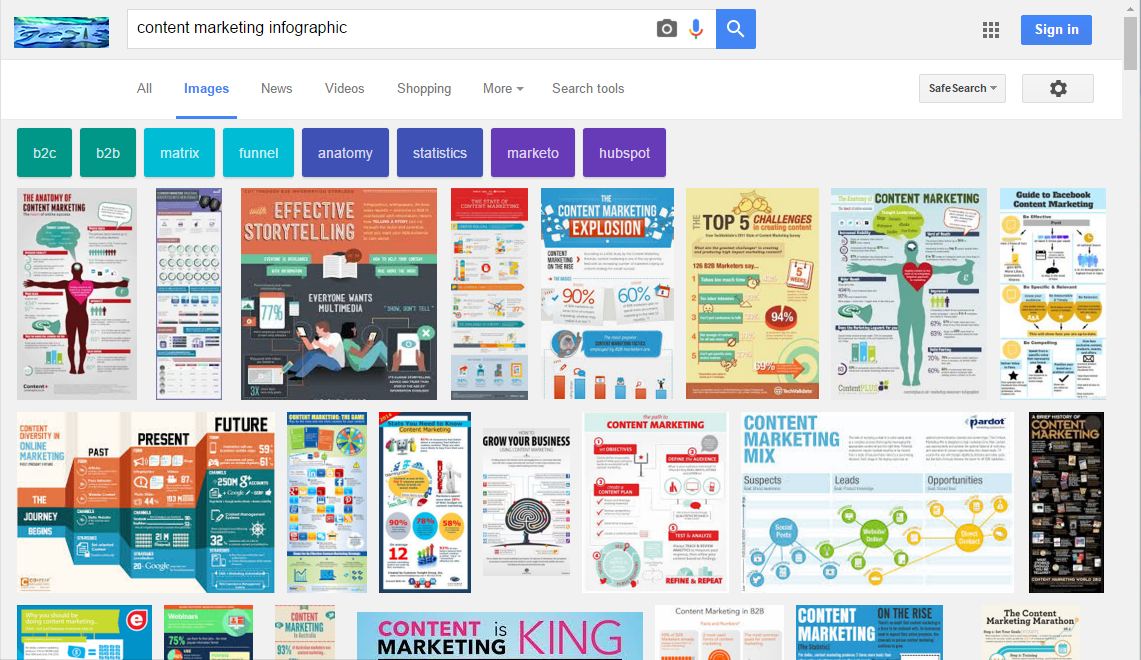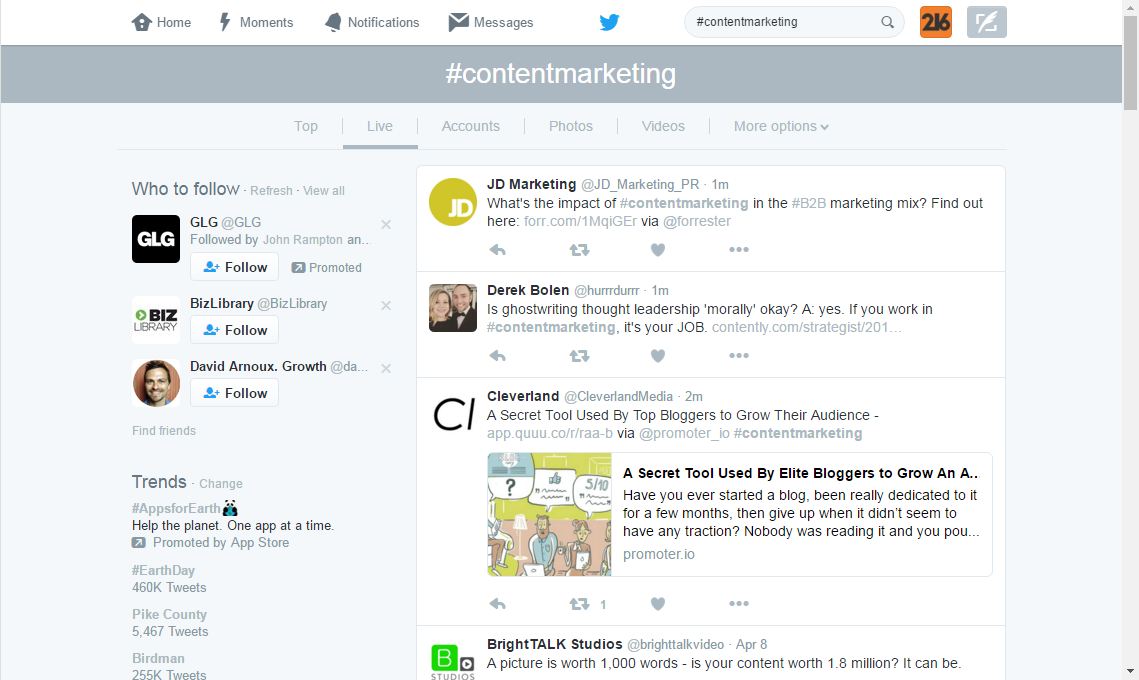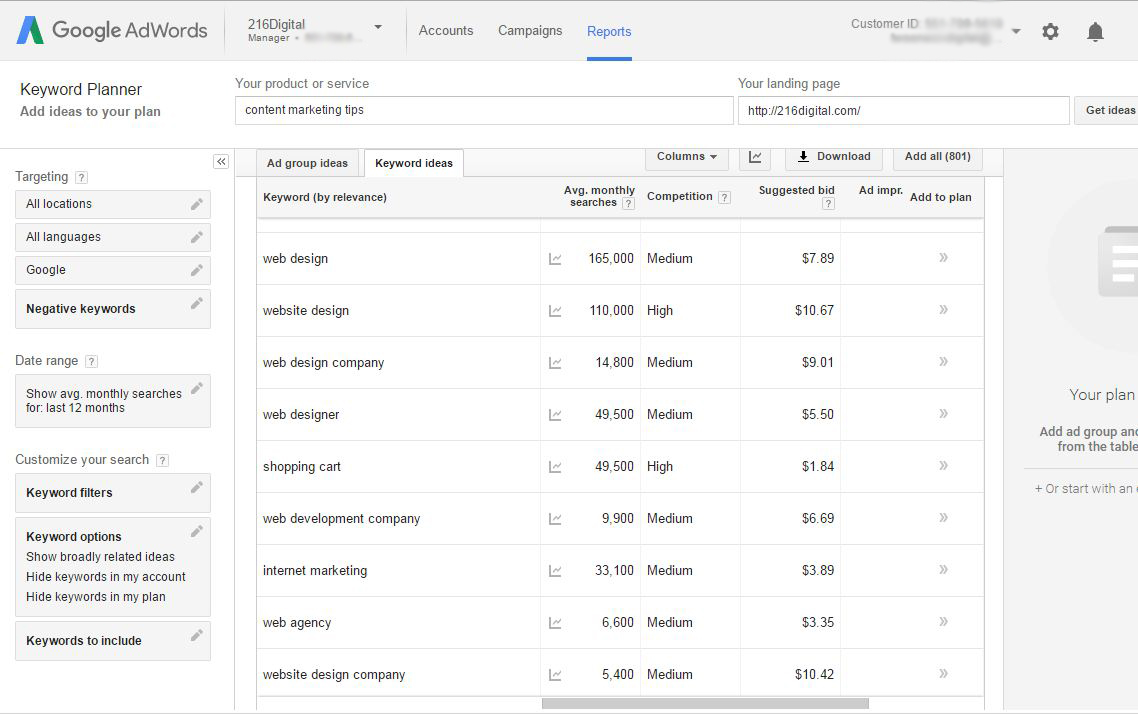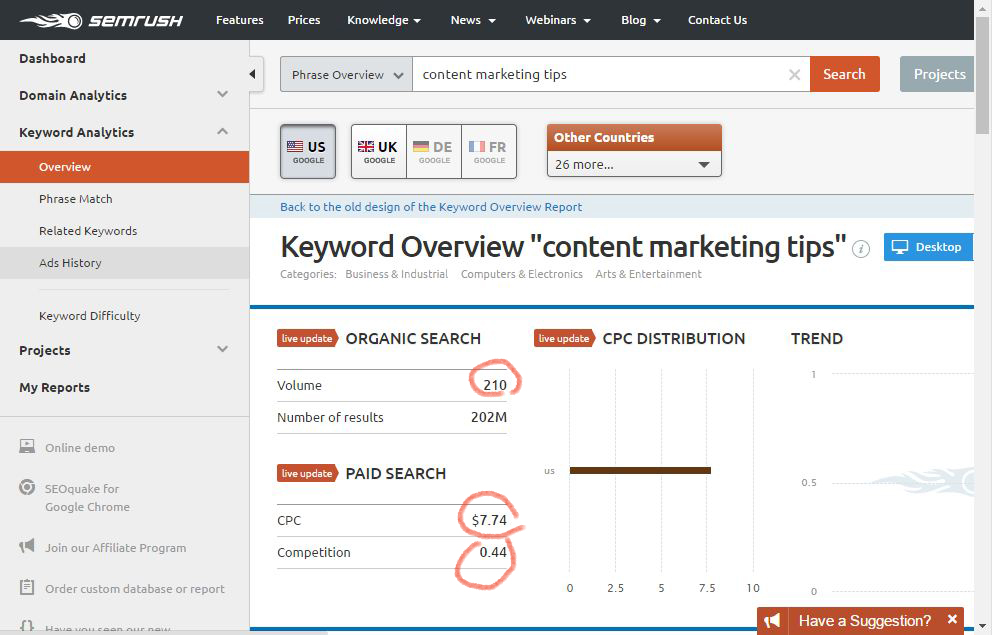The ULTIMATE Guide for Brands Who Want to Publish
Brands are joining the content marketing frenzy every day. If you haven’t started practicing content marketing yet, it’s high time you did. But where do you start? How do you work with available resources, affordable publishing tools, and strangers who don’t know your content exists? Worse—how do you turn this Mt. Everest of difficulties into a value-creating resource for your brand?
Glad you asked.
This article won’t turn you into a content marketing whiz overnight. It’s not even designed to do that. It’s just too big! Rather, we wrote this article to publish all of our greatest content marketing tips in one place. This is that big fat reference book that used to sit on your desk. That’s why we call it the Big Book.
Wherever you’re at in your content marketing campaign, we’ve assembled the ULTIMATE list of content marketing tips. We cover everything here, from setup to final promotional outreach. We’ve broken this massive article into 7 chapters. No matter where you’re at in the process, you can find actionable strategies to help you improve that step, right now, today.
Let’s dive in!
CONTENTS:
I. Research and Setup (19 tips)
II. Generating Content Marketing Ideas (14 tips)
III. Keyword Research for Content Marketing (12 tips)
V. Initial Networking (9 tips)
VI. Publication Process (9 tips)
VII. Initial Promotion (7 tips)
VIII. Link Building Outreach (9 tips)
IX. Measuring Your Results (12 tips)
I. RESEARCH AND SETUP (19 tips)
[clickToTweet tweet=”Define your #contentmarketing objectives from the beginning. They dictate your #contentstrategy http://bit.ly/1poOzCy” quote=”Define your #contentmarketing objectives from the beginning. They dictate your #contentstrategy”]
1. Define your content marketing objectives from the beginning. What are you trying to accomplish? If you don’t set clear goals for your content marketing efforts, you won’t even know what you’re striving for. Many companies make a half-hearted effort at blogging and social media and call it content marketing. In today’s highly-saturated content landscape, an uneducated and lackluster attempt just won’t cut it.
2. Define your primary audience and discover where they hang out online. You want to speak what they speak, and you want to speak where they speak.
3. Research your primary audience. What are their beliefs and values? What types of content do they like? You can’t succeed in a content market without knowing that market.
4. Create accounts in all the relevant social media platforms. Research best practices in those platforms that aren’t familiar to you.
5. Use BuzzStream. No excuses. This incredible service will automate the more tedious aspects of content promotion and outreach. In the research phase, you can add contacts and their information to BuzzStream with one click—including things like tagging the contact for niches, and noting what kind of opportunity the contact may offer. You can segment your contact lists, create email templates, personalize individual messages, choose when to send, and set follow-up reminders, among many other features.
6. If you’re not using BuzzStream, make a Content Outreach spreadsheet. Prepare for it to get HUGE! Every time you find a viable content outreach contact, you’ll want to log a variety of information. Record what niche the contact belongs to, as well as any relevant sub-niches and content focuses. Record their domain name, Twitter page URL, and Facebook page URL. Consider logging their follower counts and typical share counts for posts, as well. Make cells for logging ALL of your communication with each contact. When you go to do outreach, this information will help you to start at the top, reaching out to your most targeted and valuable contacts first. It will also help you to avoid awkward missteps from confusing different communication you’ve had with different contacts.
7. Break your outreach list into smaller segments by sub-niche. This will help you focus your outreach for specific content in the future. If you don’t know your niche and sub-niches well enough at this point to break them out, you can do it later, after you’ve learned more about your niches.
[clickToTweet tweet=”Explore similar accounts on Facebook and Twitter. #contentmarketing tip from @216_digital http://bit.ly/1poOzCy” quote=”Explore similar accounts on Facebook and Twitter. #contentmarketing tip from @216_digital “]
8. Explore similar accounts on Facebook and Twitter. After you Like a Facebook page or follow a Twitter account, explore all the similar accounts that appear at the top or side of the page. This will help you find audiences and outreach contacts related to your primary audience.
9. Explore the Twitter accounts of several people in your niche. Look at accounts that retweet these people, and look at which accounts these people retweet. This can lead you to accounts both in your niche and in related niches. Accounts in both niches are valuable contacts for promoting your content.
10. Find 10 fantastic pieces of content from other people in your niche. Paste the URL of these pieces into Facebook search and Twitter search. Where permissions allow, this will reveal accounts which have shared great content in your niche. If your content is this amazing (and it will be), these accounts will share your content, too. Find their websites and add them to your Content Outreach spreadsheet.
11. Make a list of the Top 5 thought leaders in your niche. Who publishes about them? These are individuals who consistently think ahead of the curve in your market. Google each person’s name—but look past their own websites and social accounts. Who publishes content about these 5 leaders? Who shares content about them on social media? This technique can lead you to outreach contacts and audiences which you hadn’t thought of before.
12. Research keywords with an eye toward organizational goals. Use a keyword tool like SEMrush to determine a) what keywords your brand needs to rank for, and b) what type of content currently ranks for those keywords. Note: in content marketing, keyword intent is critical. You need to focus on keywords which have at least some informational intent (as opposed to purchase intent). Find opportunities in which weak content ranks on the first page of Google for one of your keywords with informational intent. Schedule yourself to write a fantastic piece of informational content that is far better than the weak content that currently ranks for that keyword.
[clickToTweet tweet=”Create an editorial calendar to meet goals on schedule. #contentmarketing tip from @216_digital http://bit.ly/1poOzCy” quote=”Create an editorial calendar to meet goals on schedule. #contentmarketing tip from @216_digital”]
13. Create an editorial calendar. This is the backbone of magazine and blog publishing, and it will become your daily hangout. You can purchase editorial calendar software, but there are clever free solutions available, too. For those who don’t want to purchase something, we recommend using a calendar in Google spreadsheets, since multiple team members can assign tasks and edit them at the same time.
14. Determine the rules for your editorial calendar, and communicate them to your team. Empower your team to follow the rules by providing a simple, easy-to-remember procedure for marking tasks that need more time or didn’t get done at all. You don’t want content marketing tasks to get lost in the chaos of shifting timelines.
15. Prepare your WordPress site for thoroughbred performance. Whether you already have a WordPress site or you’re just setting one up, you’ll need to configure it to follow best practices. Set Permalinks to post names, create a public-appropriate nickname for your publishing account, and turn off comments if you won’t be moderating them manually and through plugins.
16. Speed up your WordPress site through caching. WordPress is notoriously slow, even on fast servers. Install a caching plugin, such as W3 Total Cache, to speed up your site.
17. Speed up your WordPress site with a CDN (content delivery network). Consider using a content delivery network to speed up the serving of certain content when users return to your site. CloudFlare offers a free CDN.
18. Optimize all imagery for web. Gigantic pictures will slow down your site. As a rule of thumb, for full-width blog posts, all images should be at least 1200px wide. For blogs that use a sidebar, you can usually get away with a minimum width of 800px. When you save your images as JPEGs in Photoshop, be sure to Save for Web, or else adjust the quality slider down. Your final file size should be 100-300kb maximum.


19. Install the Yoast SEO plugin. It will give you a quick look at how search-engine-optimized every piece of content is. It won’t help you rank higher directly, but it will show you problems with your onsite optimization for each content marketing piece.
II. GENERATING CONTENT MARKETING IDEAS (14 tips)
[clickToTweet tweet=”Read EVERYTHING — even content outside your industry. #contentmarketing tip from @216_digital http://bit.ly/1poOzCy” quote=”Read EVERYTHING — even content outside your industry. #contentmarketing tip from @216_digital”]
20. Read, read, read. Read everything. It’s been said that no one reads anymore. This simply isn’t true. Rather, the way we read has changed. Don’t read only within your industry or your personal interests. Get interested in everything. Read the New York Times, the just-launched blog in your industry, and everything in between. As you read, take notes, particularly questions you have that the article doesn’t answer. As you investigate these questions, you may find topics and angles that haven’t been covered yet—things which the content market is hungry for.
21. Think like your reader. You’ve already done the market research. You should have a general notion of who your audience segments are and what they care about. And while thinking about segments is good, it can also hurt your efforts. A segment is a concept; a reader is a human being. Take a step back and imagine yourself in your reader’s shoes. What are you dying to know? What information are you hunting for that you can’t find anywhere else? Respect your readers, and they’ll love what you publish.
22. Keep a running notebook of ideas. It’s been said that genius is 10% inspiration and 90% perspiration—and that’s true—but you don’t want to drop the ball on that 10%. When an idea comes, get it down, and never doubt that it’s a great idea. (You’ll vet your ideas later.) Use a spreadsheet to track your ideas. That way, you can add new ideas at the bottom of your list and move ideas toward the top as they mature after a little editing and research. That way, you know your best idea is sitting at the top of the list, ready to be written, and you know you have some great rough material to work out farther down.
23. Use BuzzSumo. This fantastic tool will show you the most-shared articles on any topic. Now, you can’t just use the same ideas which BuzzSumo shows to be successful; they’ve already been done. But these successful topics and angles can give you a starting place. You just have to add that extra edge that hasn’t been covered yet. This might be a new angle, a new extension of the topic, or a connection between two popular topics that no one has thought of yet.
24. Use AllTop.com to discover popular content. This site gathers the most popular articles on every imaginable topic. AllTop doesn’t get too specific with sub-topics, so it’s a good way to discover what’s rising to the top within a general topic area.
25. Use the Google Top 40 results. The first four pages of Google will show you a lot. You can get a quick sense of whether a topic has been covered recently, or if the best coverage is now out of date. You can also find outliers, articles from sites you’ve never heard of. These surprises can give you new ideas.
26. Use YouTube. Not all content is written! YouTube is a great resource for topics and angles that are popular. View counts and subscriber counts give you an instant pulse on how hot something is. In particular, YouTube can give you ideas that have appeared in video form, but haven’t appeared in written form yet. As long as you cite your source (the video), you can write the first article on this topic.
27. Search for infographics on your topic. Infographics have exploded in recent years. This format is great for presenting data in an easy-to-digest format. But remember, Google can’t read text in an image. That means the best way to search for infographcis is a Google Image search for “your term + infographic.” Use your best judgment to determine the quality and relevance of the results you get.
28. Search hashtags on Twitter. Other people in your space are trying to promote their stuff, too. They’ll use the same hashtags you care about. A hashtag search can lead you to a just-published article, shared on Twitter, which you never would have found otherwise. In particular, pay attention to hashtag intent. Some hashtags have multiple meanings. For example, #NDT may refer to “nondestructive testing” or “Neil deGrasse Tyson.” Completely unrelated to each other!
29. Search forums that cover your niche. This is a way to find emerging topics—problems that haven’t been covered yet in your space. Forums are ideal because the readership is specialized, and the information is freely exchanged. You can get a fantastic read on emergent topics just from reading forums.
[clickToTweet tweet=”Read comments on articles by leaders in your niche to find new topic ideas. #contentmarketing http://bit.ly/1poOzCy” quote=”Read comments on articles by leaders in your niche to find new topic ideas. #contentmarketing tip”]
30. Read the comments on articles by leaders in your niche. This is where expert readers call out things that a great article didn’t cover. If an expert writer in your niche didn’t cover something that readers are hungry to know, this is a prime opportunity to fill a content void.
31. Talk to your coworkers, especially “support” staff. They typically spend the most time with your customers, going over points of pain. These folks generally have a great sense for what problems exist in your space.
32. Ask for feedback from Twitter contacts. As you interact around your niche’s topics on Twitter, share your rough ideas with experts in your space. Ask them what they think. Of course, there’s a caveat: if you’re asking upstream, you don’t want to give away too much of your great idea. A Twitter contact with more resources than you may publish on the idea first.
33. Look into related (shoulder) niches for topics that matter to them. No topic or niche exists in a vacuum. In fact, all topics connect to all other topics in one way or another, even if it takes several connections to get from one to another. All that to say—branch out into related topics. If your main niche is custom web development, look into app development, ecommerce development, and WordPress development. These are shoulder niches that partially overlap with the content in your niche.
III. KEYWORD RESEARCH FOR CONTENT MARKETING (12 tips)
34. Use the Google Keyword Planner. It provides comprehensive data, and it’s free to use. If you’re on a budget, this should be your go-to tool. When you plug in a keyword, it will spit out groups of related keywords. Though not all the results will be relevant to your content marketing campaign, you will find keywords you hadn’t thought of before.
[clickToTweet tweet=”Use Google Suggest to find related keywords. #contentmarketing for #seo tip from @216_digital http://bit.ly/1poOzCy” quote=”Use Google Suggest to find related keywords. #contentmarketing for #seo tip “]
35. Use Google Suggest. Type one of your keywords into Google and look at the suggested search strings in the dropdown. These are real keywords which other users have searched for—which Google believes are related to your search. Not all of these will be on point, but some will offer incredible opportunities that you wouldn’t have found otherwise.
36. Use Similar Searches at the bottom of a Google search results page. Much like Google Suggest, this will show you related keywords which you might not have thought of on your own.
37. Use a paid keyword research tool. Even if you’re on a shoestring budget, this is one of the best places to spend your money. In our opinion, the top paid keyword research tools on the market are SEMrush and Moz. Each one does things little differently. If we had to choose between them, we would choose SEMrush. It allows you to examine keyword competition from many angles, and it provides deep data insights.
38. Use “body” keywords. As Brian Dean explains at Backlinko, “body” keywords (strings of 2-3 words) are the sweet spot in SEO. You won’t rank for 1-word generic keywords; the big brands have these covered already. You could rank for long-tail keywords (4+ word strings), but these don’t receive a high monthly search volume, so they won’t bring you as much value. Body keywords offer the right combination of specificity (more specific than 1-word keywords) and traffic (more heavily searched than long-tail keywords). Use ’em!
39. Look at the table of contents in Wikipedia articles. This tip is also from Brian Dean at Backlinko, and it’s simply brilliant. Because Wikipedia is (usually) so well organized, the table of contents in a general Wikipedia article will show you many sub-topics under that general topic. This is a great way to find keywords and keyword groups that begin to branch out from the core topic in question.
40. Look at related keywords in the Google Keyword Planner and SEMrush, and look at discovered keywords in Moz. SEMrush and Google are especially good at showing you related keywords. Of course, any related keywords you find need to be vetted in SEMrush for monthly search volume, CPC, and competition.
[clickToTweet tweet=”Vet your keywords in @semrush. It’s a tough boss, which is good for #seo and #contentmarketing http://bit.ly/1poOzCy” quote=”Vet your keywords in @semrush. It’s a tough boss, which is good for #seo and #contentmarketing”]
41. Vet your keywords in SEMrush. SEMrush is a tough boss. That means it’s a good boss. It will display “no data” for a worthless keyword. If your keyword isn’t listed in SEMrush, don’t even bother trying to rank for it. Throw it out, even if you have to go back to the drawing board.
42. Vet your keywords with the Moz Bar. Google your keyword and look at the top 10 results. With the Moz Bar turned on, check out the domain authority of the sites that are ranking on the first page for that keyword. If you’re going up against high-DA sites all over the first page, this keyword may not represent an opportunity for you. However, if there’s even one low-DA site ranking for your keyword, you should think to yourself, “that could be me.”
43. Understand the value that a keyword does or doesn’t bring to your campaign. Remember, real users are entering the search terms which we call “keywords.” They’re looking for things. Luckily, it’s easier than you might think to understand the intent behind a keyword. There are three dimensions to a keyword which you should pay attention to: monthly search volume, CPC (cost per click in AdWords), and competition level. A high monthly search volume means more traffic if you rank for that keyword. A higher CPC means that keyword is more monetizable—in other words, AdWords bidders are willing to spend more on it because it’s more likely to lead to a conversion in that market. Competition level (in SEMrush) or keyword difficulty (in Moz) are roughly the same concept: how many people are trying to rank for this keyword?
44. Don’t stuff exact-match keywords into your copy unnaturally. With the advent of LSI (latent semantic indexing), Google can now understand what a page is about. That means you can write naturally, for human readers, and Google will get it (if you do a good job). In other words, if your keyword is “dog allergy treatment,” you can write natural phrases like, “…offers great treatment for dog allergies…” or “…a great way to treat your dog’s allergies.” Google will get it.
45. That said… get your keyword into the title of your article, and put it as close to the beginning as possible. This tip is from the world of onsite SEO, which is all about optimizing small parts of your site (particularly metadata) to get big results. While LSI means you can write naturally in copy, you should still put the exact keyword in your title.
IV. CONTENT QUALITY (15 tips)
[clickToTweet tweet=”Set an organizational standard for content quality. #contentstrategy from @216_digital http://bit.ly/1poOzCy” quote=”Set an organizational standard for content quality. #contentstrategy from @216_digital “]
46. Set an organizational standard for content quality. Even in obscure niches that don’t have high standards, your content must be the best that anyone is publishing in that niche. If you aren’t a professional writer or blogger, you need to get one on your team—maybe more than one. Look for people who have a wide variety of writing and blogging experience, as well as knowledge of editorial processes.
47. If you can’t hire, you need to train your existing staff on best practices. Consider giving everyone the same writing assignment and see how things go. The results will show you the strongest writers you already have on staff. You’ll also see what problems you need to address when you start training. Obviously, a baseline writing assignment for your candidates is critical if you’re hiring.
48. Maintain high editorial standards. If your writing staff doesn’t have a background in professional blogging, you’ll need to train them to help them develop an editorial eye. This applies to headlines, article body, and images, but it also applies to the overall impression which your content makes in its niche. How will the piece of content come across to a stranger who avidly reads in your niche? Does your chosen imagery reinforce the angle of the piece, or does it confuse the focus of the piece? The overall impression which your content makes, from the very first research to the tone of your final outreach communication, will make or break your efforts.
49. Don’t reinvent the wheel—use successful content templates! As the internet has continued to evolve, certain content templates have risen above the others as being easiest to read online. A content template gives you structure to work with. It makes the whole process easier, from idea generation to writing to promotion. Some of our favorite templates include long list posts (like this one), innovative infographics, best-of roundups, and expert roundups.
50. Consider adding a CTA (call to action) in your piece. Since this is content, you shouldn’t make it a hard sell; since this is marketing, you should still look for ways to bring value to your organization from the content. This could be an email signup bar that offers “more free tips,” a click-to-tweet widget that includes your brand @-mentioned in the tweet, or an invitation to respond by leaving a comment. Remember: content marketing doesn’t end with the final paragraph!
Check out the SevenAtoms blog for an in-depth guide to creating a call to action.
51. Train your staff on photo acquisition strategies that fit your budget. If you can’t afford to license 10 photos for every article you write, you’ll need a free alternative, and you’ll need to explain best practices to your staff. At 216digital, we use a combination of sites like Pixabay and “reuse allowed” search settings on Flickr and Google Images. Make sure you understand Creative Commons licensing when you pull reusable photos from Flickr, Wikipedia, and Google, and make sure your writers understand how to cite these images in their copy. NEVER allow your staff to republish photos which appear with an “All Rights Reserved” copyright statement without obtaining written permission from the copyright holder. More information on Creative Commons licensing from Wikipedia.
52. Vet your concepts thoroughly. Never move ahead with a content concept that you haven’t researched and self-critiqued. The moment of inspiration can be emotionally overwhelming, and those emotions can fool you. Sometimes, inspiration gives you junk. Sometimes it gives you gold. Give your ideas time to move from inspiration to fully-developed concepts.
53. Fact-check everything. This is especially important if you’re writing for a client in a niche that’s relatively new to you. Don’t be afraid to reach out to sources directly through email and social media. It’s better to ask for clarification now than find out after publication that you failed to state the truth.
54. Think like an entrepreneur. To succeed at content marketing, you need to bring something new to an information market. Why should a reader spend time on your work when thousands of other media entities have been publishing better than you, longer than you? If you don’t fill a need in an information market, you shouldn’t even try to do this. What’s your value proposition? You can’t be “Just another WordPress blog.” You need to fill a gap that currently exists in a niche—whether the readers in that niche know the gap exists or not. (Sometimes you’ll surprise them!) That gap-filling can take many forms: a unique angle on an existing topic; a topic that is extended beyond its previous dimensions; a mashup of previously unrelated topics (as long as your case for a connection is compelling); a topic covered in more detail than ever before; and a topic that is covered actionably, where actionable content on that topic has never been published.
[clickToTweet tweet=”Develop a writing process, but don’t get tight about it. #writingtip for #contentmarketing http://bit.ly/1poOzCy” quote=”Develop a writing process, but don’t get tight about it. #writingtip for #contentmarketing “]
55. Develop a writing process, but don’t get tight about it. Include multiple revisions as part of that process, and leave room for startling ideas and inspired workflows which you didn’t anticipate. Sometimes, great content emerges complete from half an hour of work. Sometimes, it takes weeks of plugging away. At 216digital, we adhere to an exacting process, all the way from research to the approval of final copy. The more sets of eyes who sign off on your content, the better it will be.
56. Ask for expert critiques. Early in your content marketing campaign, consider sending a few draft articles to link creators in your niche. Ask them for honest feedback, and explain that you’re trying to improve your work. You’ll get critiques from industry insiders, and you’ll start to build relationships from a place of humility. In the world of spam, those relationships are priceless. When you eventually publish an improved version of the article, those contacts will get a sense of satisfaction when they look at it because they know they helped you improve. (Hint: that means they’ll be more likely to share to it and/or link to it.)
57. Proofread, proofread, proofread. You’d be amazed at how many mistakes will slip past you. Consider printing your articles to proofread them, since mistakes tend to pop off paper better than a screen.
58. Don’t skimp on design. It’s just as important as writing. Today’s content consumer is highly visual and expects to be delighted. Even a long-form essay or article needs at least one strong visual at the top. Top-notch design is especially critical for infographics. The infographic as a form has exploded in recent years, and that has led to a lot of noise in the infographic space. Your infographic’s design (not to mention editorial angle) must be truly epic to stand out. Allow time and budget for multiple revisions to an infographic, and push your team to go beyond their comfort zones. The results will amaze you.
59. Communicate content values clearly to your team. Especially when you take on a new client or add a new team member, the prospect of doing top-notch content marketing for an unknown company looks incredibly daunting. Your team needs an in-depth understanding of each client’s brand and market. Communicate clearly from the beginning, and you’ll avoid expensive problems later in the process.
[clickToTweet tweet=”Manage your #contentmarketing team like a teacher. #contenstrategy from @216_digital http://bit.ly/1poOzCy” quote=”Manage your #contentmarketing team like a teacher. #contenstrategy from @216_digital “]
60. Manage your content marketing team like a teacher. Respect your team. They’re people, and they’re trying hard. When their work doesn’t meet up, take it as an educational opportunity: not a lecture from you, but an open discussion. When you hit a content crisis, call a meeting. Open the floor with a non-accusatory statement that invites everyone present to solve the problem creatively—something like, “I’m a little concerned about the quality of our work. I’m turning this discussion over to you guys. How can we get better?” Be prepared to moderate the discussion and bring it back to organizational goals if it gets off track, and don’t allow team members to have the final word. When you facilitate education rather than force it on people, your team grows in their communication with each other, and they learn easily from their peers.
V. INITIAL NETWORKING (9 tips)

61. Know your space. Whether you’ve been working in your niche for years or you’re just starting, you need to know the people in your content network. This is an intangible asset, and it’s impossible to quantify or turn into data. Here, your intelligence as a reader, writer, editor, and marketer are invaluable. You need to have a sense of what’s appropriate in communications in your niche. Without this knowledge, you risk offending the very people you’re trying to network with.
62. Let your organizational goals inform your outreach. Return to our very first tip. Why are you doing content marketing in the first place? Your initial outreach efforts must further your goals, and only your goals.
63. Familiarize yourself with each individual contact or blogger. What do they do? What makes them tick? Get a sense for their values and personality, to the extent that they display these qualities on their website and social media. You need to respect the people you’ll be contacting.
[clickToTweet tweet=”Get on the phone. Seriously! #contentmarketing tip from @216_digital http://bit.ly/1poOzCy” quote=”Get on the phone. Seriously! #contentmarketing tip from @216_digital “]
64. Get on the phone. It sounds crazy, but sometimes, one phone call is better than a thousand emails. As long as you have a valid reason for calling and you manage the communication well, you can establish and strengthen valuable relationships this way.
65. Don’t be afraid to give up. If a blogger looks great until you find something that clearly rules them out as a good networking prospect, just move on. For example, some bloggers hate getting any kind of promotional email. (Hint: they don’t want yours.) Don’t waste your time on these folks. They’re doing their own thing, and that’s okay.

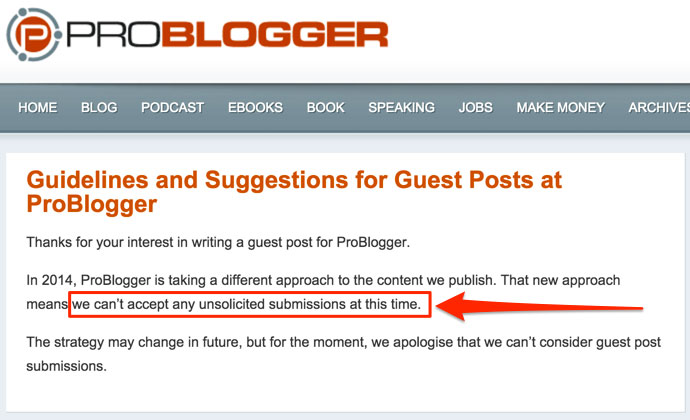
66. Get personal. Even in smaller niches, webmasters and bloggers get tons of email every day. If you’ve taken the time to familiarize yourself with the blogger you’re reaching out to, you’ve probably learned his or her first name. Use it! It shows respect, and it shows that you know who you’re talking to. There’s nothing worse than a cold-call email that starts with, “Dear Sir or Madam…”
[clickToTweet tweet=”Call out the contact’s existing work. #contentstrategy from @216_digital http://bit.ly/1poOzCy” quote=”Call out the contact’s existing work. #contentstrategy from @216_digital “]
67. Make reference to the contact’s existing work. Call out individual article titles or values from an About page—but do it naturally. This shows that you know who you’re talking to, and that you really do share something in common with them.

68. Find a reason to get in touch. Remember, this is initial You may not have any content published yet, and that’s okay. We already mentioned sending someone a draft article for critique, but there are tons of other things you can do. For example, you can ask for a critique on your website as a whole. You can ask for tips on developing a social media audience in your niche. You can ask anything that a student might ask a mentor. Fundamentally, people enjoy helping each other out, as long as your question doesn’t take too much of time. Ask for a tip about one thing only, and keep your email short (2-4 lines total) while still demonstrating that you’re a real human and not a robot. If that sounds like a tall order, start practicing now, and take note of what kinds of responses you get with different strategies.
69. Don’t burn bridges. Some people don’t like getting emails from strangers. Other people will try and sell you services or offer to publish your “sponsored content” on their site for a fee. Even if you get responses that you weren’t anticipating, don’t respond with any kind of negative attitude. Keep it positive and professional. You never know when these same contacts might come across your content in the future, and you don’t want a negative impression to stick in their minds.
VI. PUBLICATION PROCESS (9 tips)
70. Work with WordPress. Don’t fight it. WordPress can’t do everything, and that’s okay. Play around with your theme’s limitations, and take notes on what produces acceptable results. Turn these notes into a best practices document and share it with your team.
71. Consider using a paid theme for your blog. Free themes look like a steal until you install them. They don’t offer the level of control that you’ll need to execute powerful content marketing. At 216digital, we’ve had great success with the Avada theme from Theme Forest. It offers near-total control of many aspects of your blog’s design, typography, site structure, and overall impression. Avada comes with the Fusion Builder, a tool that lets you build original, mobile-responsive layouts for your pages and posts. That means you get can implement unique designs for your content marketing pieces without knowing a lick of code.
72. Don’t invest in hand-coded custom development for your individual content marketing pieces. With so many human resources going to research, writing, design, and promotion, you most likely won’t see any ROI for custom development expenses unless you’re working for a big brand. When you can “outsource” beautiful custom layout to a WordPress theme like Avada, there’s no reason to pay for custom dev.
[clickToTweet tweet=”Assign publication tasks to your strongest editors. #contentmarketing tip from @216_digital http://bit.ly/1poOzCy” quote=”Assign publication tasks to your strongest editors. #contentmarketing tip from @216_digital”]
73. Assign publication tasks to your strongest editors. You’d be surprised at how many issues can arise when you prepare your content in WordPress. Ensure that you assign publication to team members who have a strong eye for quality as regards the final product. If your writers are also your WordPress publishers, get at least one more pair of eyes on their final work. It’s easy to miss problems in the finished product when you’ve worked at the center of a project through all its developmental stages.
74. Make sure all your embedded links open in a new tab. It’s easy to overlook this. When you create a hyperlink in the WordPress editor, it automatically opens in a new tab. Unfortunately, when you paste text with hyperlinks into WordPress from Microsoft Word, you’ll have to manually change each and every link to open in a new tab. If you don’t, a user will leave your page when they click a link, which creates lower average session times on your page. Google interprets low session times as equating with low-value content—exactly what you DON’T want.
75. Consider using Rich Snippets (Schema.org markup). While it isn’t essential, this technique provides search engines with a clearer picture of the structure and focus of your content. That leads to more relevant search results when users search for your keywords—which means you’ll show up, since you did heavy research and spent hours writing a great piece of content which is already highly relevant. Think of Schema.org markup as a way to make your relevancy crystal clear to search engines.
76. Install a social sharing plugin. We recommend Social Warfare, a paid plugin that not only tracks shares accurately, but gives you an incredible range of styling options. Social Warfare allows you to design your share buttons to fit seamlessly into the look and feel of your blog. You can also set a minimum share count for displaying numbers, control the number of decimals to display in share counts over 1000, decide which network share buttons show on your site, and more. Why is this so important? For better or worse, share counts demonstrate your content’s value at a glance. An article with 2.3k shares looks better to link creators than one with 60 shares. The best part? Social Warfare now has an option to start counting Twitter shares again. For content marketers whose niche uses Twitter heavily, this is a godsend.
77. Don’t publish until your piece has been thoroughly vetted in Draft mode. This ensures that no one will happen upon an incomplete or error-riddled live version of your piece. More importantly, it ensures you won’t begin showing a sloppy published version to link creators and publishers who you hope will link to the piece.
[clickToTweet tweet=”Don’t publish until you can spend the rest of the day on initial promotion. #contentmarketing http://bit.ly/1poOzCy” quote=”Don’t publish until you can spend the rest of the day on initial promotion. #contentmarketing tip “]
78. Don’t publish a piece until you’re ready to spend the rest of the day on initial promotion. Newness really does make a difference. High-quality articles may continue to attract links and shares, but for whatever reason, content generally performs best when it’s promoted heavily right away–especially if it’s timely. Of course, there are technical benefits to coupling publication to promotion in the same day. If you’re using Social Warfare for share counts, that plugin updates share counts about once every hour for posts that are 21 days old. When you click Publish in WordPress, you should be ready to begin initial promotion of the piece on social media. That way, as new share counts come in throughout the day, a buzz will build around your piece.
VII. INITIAL PROMOTION (7 tips)
79. Know your niche’s preferred social networks, but try everything. Especially in the initial stages of building your content marketing campaign, you might be surprised at how your content performs on social networks which you might have overlooked.
80. Think outside the box to raise Facebook share counts on your content. Find Facebook groups related to your content niche, and spend time developing a respected presence there before you post your content. This is especially useful if you join an industry-insider Facebook group. You can post your content to get feedback from professionals in your space. All of those comments and likes will count as shares in your share count plugin, and that makes your content look more valuable when you start heavy promotion.
81. Consider Reddit for niches that have a subreddit on your topic. Of course, you need to be careful and respectful on Reddit. If you join and post your content the same day, you could get shot down. However, if you spend time building a reputable presence on Reddit—a presence related to your niche—it won’t seem out of place when you post your content for feedback and opinions. Make sure you put your post in the appropriate subreddit, and give it a title that fits the feel of that subreddit.
[clickToTweet tweet=”If your content is strong enough, pursue social shares from big publishers. #contentstrategy http://bit.ly/1poOzCy” quote=”If your content is strong enough, pursue social shares from big publishers. #contentstrategy “]
82. If your content is strong enough, pursue social shares from big publishers. Major media sources may not link to your content, but they may share it if it fits their niche and doesn’t harm their organizational objectives. At 216digital, we wrote a piece on top-notch graphic designers. We got retweets from AIGA (the American professional association for designers) and HOW Magazine (a major content brand in the design space). This jacked up the visibility of our article in the exact target market which we wanted to hit.
83. In an agency setting, cross-post your content to all appropriate social profiles. If you manage social media for a wide range of clients, and if you have your clients’ permission, consider posting your content to the social accounts of multiple brands. This tip only works when the content aligns with each client’s niche—but it’s easier than you might think. Say you have a client who sells high-quality furniture, and another who sells interior design services. A great piece of content on selecting the perfect furniture for your home is appropriate for both social media accounts.
84. Tweet your content to relevant users (in moderation). If you can’t find a contact on the blog or website in question, follow the brand on Twitter, retweet or favorite a few of their posts, and tweet your content to them with a short, engaging, and relevant message. Include 1-2 relevant hashtags to help related Twitter users find the post, too. Include a relevant, entertaining image in your post to ensure users take action on it.
85. Don’t ignore LinkedIn. Some niche content markets talk almost exclusively on LinkedIn. Post your content to your company profile. If any of your team members want to, they can post it to their personal accounts, too. This is especially effective for creators (writers, designers, etc.) who had a direct hand in creating the piece. Let your team take pride in their work.
VIII. LINK-BUILDING OUTREACH (9 tips)
86. Know your outreach list. Most content marketing campaigns will overlap several related content niches. Not every piece you create is right for every segment of your list. If you didn’t separate your list into sub-niches when you first assembled it (or if you didn’t tag your contacts by sub-niche in BuzzStream), do that before you begin outreach. Make sure you promote your content marketing only to the most targeted segments of your list.
[clickToTweet tweet=”Use outreach email templates, especially in @buzzstream #contentmarketing tip from @216_digital http://bit.ly/1poOzCy” quote=”Use outreach email templates, especially in @buzzstream #contentmarketing tip from @216_digital”]
87. Use outreach email templates. This is especially easy in BuzzStream, where you can save templates and select them with 2 clicks. Even if you’re doing everything manually, you should prepare your email templates ahead of time and put them through a comprehensive editing process. Your first email draft is never your best.
88. Keep your outreach emails concise, and show value. Everyone is busy. Most people will take a moment to read an email that looks like it offers value. Don’t waste the precious time of bloggers and webmasters in your space. Keep your emails short (2-3 paragraphs, 5-8 lines total) and show the value you’re offering. If you’ve done your research, you’ll get results.
89. Give yourself a quick overview of each contact before you email them. You’ll avoid outreach bloopers, and you may discover new information that will help your efforts—i.e., a new blog post from the contact which you can call out in the email.
90. Flatter, shoot the breeze, and negotiate. You can’t write a cold-call email asking for a link. You have to sell. You have to make people feel special, and you actually have to mean it.
91. Offer your work as a guest post. Not every blog or magazine wants guest posts, so read the about page first! However, if you find an outlet that’s looking for guest posts, and if your piece seems like a good fit, go ahead and pitch it. Small- to mid-size blogs in particular are always looking for new content, and they’re less likely to balk because a piece has appeared elsewhere first. If you find yourself working with bigger hitters, be prepared to offer them exclusive content—something that you haven’t published elsewhere.
92. Call out existing posts and articles that would be even more valuable if they linked to your page. Many bloggers actually appreciate this. Linking to a resource backs up their point, and it makes their post more credible overall. It’s possible that they were too busy to find a resource to link to when they wrote the piece, or that they searched up and down and couldn’t find anything. Pitch your work as a resource!
[clickToTweet tweet=”Find #writers who are great marketing communicators. #contentmarketing tip from @216_digital http://bit.ly/1poOzCy” quote=”Find #writers who are great marketing communicators. #contentmarketing tip from @216_digital”]
93. Not all writers and creatives are marketing communicators. If you have trained marketers and experienced salespeople on your team, they are the best candidates to do successful link-building outreach for your content marketing campaign. Know your team’s strengths and weaknesses, and assign tasks accordingly.
94. Keep insanely detailed records on your communication with every single contact. Don’t rely on your memory or searching your inbox. If you’re using BuzzStream, you’re in luck. If you’re using a spreadsheet, you’ll need to log every single communication in that spreadsheet manually. Give yourself a cliff’s notes version of the emotional tone of each person’s response each time. (You can do this in BuzzStream too, with the Notes function.) Make a note about opportunities which you can’t follow up on right now, and schedule time for follow-ups. This way, you ensure that if anything is going to stop a link from being built, it won’t be your negligence.
IX. MEASURING YOUR RESULTS (12 tips)
[clickToTweet tweet=”Use Annotations in Google Analytics to mark important dates. #contentmarketing tip @216digital http://bit.ly/1poOzCy” quote=”Use Annotations in Google Analytics to mark important dates. #contentmarketing tip”]
95. Use Annotations in Google Analytics to mark important dates. You may think you’ll remember when you launched your content marketing campaign, or when you started promoting a particular piece or project. You won’t! Annotations in Google Analytics can help you directly correlate your content marketing efforts with a spike in traffic, link building, or conversions.
96. Use Google Analytics to track how users react to your content pieces. This tip is rather elementary, but it’s worth saying. Under Acquisition, click All Traffic > Channels. Under Default Channel Grouping, click the dropdown box that reads Secondary Dimension. Click Behavior > Landing Page. Now you can see Sessions, Bounce Rate, Average Session Duration, and more for each content piece you’ve published.
97. Use Ahrefs to track links built. Of all the link-building analytics tools out there, we find Ahrefs to be the most consistently valuable. Simply plug the URL of your content piece into the Site Explorer. You’ll see the number of links built to that URL, as well as the number of linking domains. Ahrefs’ data is totally transparent, meaning you can see which links emerged directly as a result of your efforts, and which happened organically. With the ability to see when a link first appeared, Ahrefs lets you correlate links built directly with your efforts in time. However, take note: Ahrefs doesn’t always discover every link built through content marketing.
[clickToTweet tweet=”Use @Mention (mention.com) to track brand mentions. #contentmarketing tip from @216_digital http://bit.ly/1poOzCy” quote=”Use @Mention (mention.com) to track brand mentions. #contentmarketing tip from @216_digital “]
98. Use Mention.com to track brand mentions. This awesome tool emails you when your name is used, linked or unlinked. We’ve found links this way before they’ve shown up on Ahrefs.
99. Use Analytics to track which sites drive high-quality traffic to your content. Under Acquisition, click All Traffic > Channels. In the list, click Referral. Under Source, click the dropdown menu that reads Secondary Dimension. Click Behavior > Landing Page. Now you can see which domains are sending traffic to your content marketing pieces. This page can also show you “sleeper links”—great links to your content that Ahrefs hasn’t detected.
100. For link-building campaigns, calculate your success rate for every piece. Total up the number of sources to which you promoted the piece. Add 20% more sources to account for the unexpected linking opportunities which a good piece of content should generate. Divide the number of links built (from Ahrefs) by this slightly padded number of opportunities. (Alternately, you can calculate using only the link-building opportunities which you specifically found.) Express this statistic in percent, and track it for every content piece you create. Over time, this will give you insight into what works and what doesn’t in a particular niche.
101. Use Google Analytics to determine your most valuable social network. Under Social (left-hand panel), click on Landing Pages. Click on the content page you want to analyze. Take note of total sessions, total pageviews, and average session duration. Over time, as you track these stats for every content piece you publish, you’ll gain insight into which networks bring you the most value for the specific goals of your content marketing campaign.
102. Compare Analytics to your share counts. Divide Sessions per social network by total shares in that network. The result is your click-thru rate on that network, not generally available on social posts which you haven’t promoted. This metric will help you understand how users reacted to your content. Were they compelled to click, or did they simply like, comment, or share without even reading it? You can use this data to evaluate your content titles. Are your titles hooking readers, or do they tell the whole story already?
103. Know your demographic, and compare that to device sessions per content piece. In Analytics, under Audience, click Mobile > Overview. Under Device Category, click the dropdown that reads Secondary Dimension. Click Behavior > Landing Page. You’ll see Sessions, Average Session Duration, Bounce Rate, and more for all your pages, by device type. This can give you insight into your content marketing audience’s experience on tablet and mobile. If your target market includes a high proportion of mobile users (as it almost certainly does), this data can show you whether you’re hitting the mark for those mobile users or not.
104. In Webmaster Tools, monitor your search queries for new keywords. As your content marketing campaign continues to grow, branching out into new related niches, new search queries will start leading people to your site. Analyze these new keywords in a tool like SEMrush to determine what sort of value they have (or don’t have) to your organizational objectives. Allow this information to inform your future content marketing efforts.
105. Track the direct monetization of your content marketing. Using Annotations in Analytics, determine how many leads or conversions you got in the period of your promotion. Go deep, and think outside the box here: continue tracking this stat outside the period of direct promotion, and base your timetable on the amount of traffic still coming to your content piece after promotion has ended. (You can find that using Tip #58 above.) Triangulate this data with site referral data per piece (Tip #60 above), looking at conversions. This process will show you where your most highly-monetized traffic from content marketing is coming from. Use this information strategically in future content marketing efforts.
[clickToTweet tweet=”Monitor domain authority across the life of your #contentmarketing campaign. #seo @216_digital http://bit.ly/1poOzCy” quote=”Monitor domain authority across the life of your #contentmarketing campaign. #seo @216_digital “]
106. With the Moz bar, monitor your domain authority across the life of your content marketing campaign. Link-building is not the only possible goal of content marketing, but domain authority (which goes up as you get high-quality backlinks) is a great high-level metric on the results of your content marketing. If you’re creating valuable content that’s perfectly targeted to delight a niche and set of related niches, you will get links. Over time, as you follow best practices in other SEO areas as well as build high-quality links with content marketing, your domain authority will rise.
The Bottom Line
Content marketing doesn’t have to be overwhelming. With clear goals, a detailed plan, and dedicated work, you can establish your organization as a thought leader in your niche. We hope these tips help you on your road to content marketing success. Want to see how content marketing and link building can build real value into your business? Get in touch today.


